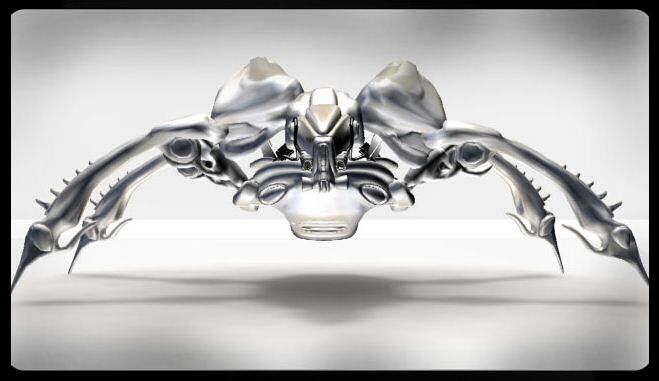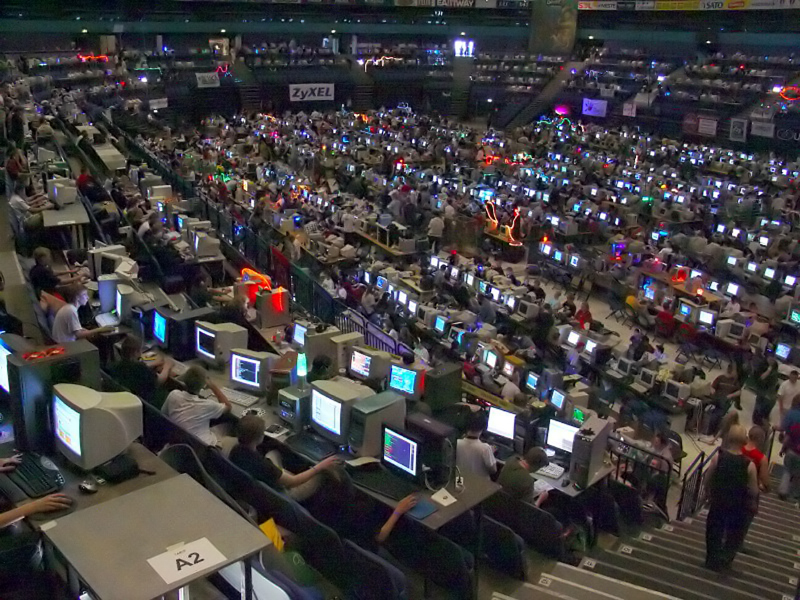|
Netlabel
A netlabel (also online label, web label, digi label, MP3 label or download label) is a record label that distributes its music through digital audio formats (such as MP3, Ogg Vorbis, FLAC, or WAV) over the Internet. While similar to traditional record labels in many respects, netlabels typically emphasize free distribution online, often under licenses that encourage works to be shared (e.g., Creative Commons licenses), and artists often retain copyright. Netlabels may have a considerably lower staff count than traditional record labels, in some instances being only a single individual in control of their music, maintaining sole ownership. Physical LPs, for example, are rarely produced by a netlabel, relying entirely on digital distribution and means of the Internet to provide the product. Having no physical product makes the running costs of a netlabel considerably less than a traditional record label and some netlabels have abandoned any financial model altogether and instead ... [...More Info...] [...Related Items...] OR: [Wikipedia] [Google] [Baidu] |
Netlabels In Japan
Since the mid-2000s, a counterculture has taken place where numerous netlabels, online labels that release their music for free, located in Japan have been formed and garnered a huge amount of publicity which, according to writer Patrick St. Michel, has shaped how popular Japanese music is produced. Japan's netlabel phenomenon was the first time in the history of the nation's music industry where underground musicians could produce their works however they wanted to and have their music noticed by the public; this is an aspect that was previously absent at a time when major labels in the country followed a conservative method where they managed how artists would produce their music. Starting in the 2010s, the netlabel scene has crossed over to the mainstream music landscape and all across the world, with netlabel producers transitioning into working for bigger labels and western producers like Cashmere Cat and Ryan Hemsworth being influenced by the music of Japanese netlabels. Histor ... [...More Info...] [...Related Items...] OR: [Wikipedia] [Google] [Baidu] |
Record Label
A record label, or record company, is a brand or trademark of music recordings and music videos, or the company that owns it. Sometimes, a record label is also a publishing company that manages such brands and trademarks, coordinates the production, manufacture, distribution, marketing, promotion, and enforcement of copyright for sound recordings and music videos, while also conducting talent scouting and development of new artists, and maintaining contracts with recording artists and their managers. The term "record label", derives from the circular label in the center of a vinyl record which prominently displays the manufacturer's name, along with other information. Within the mainstream music industry, recording artists have traditionally been reliant upon record labels to broaden their consumer base, market their albums, and promote their singles on streaming services, radio, and television. Record labels also provide publicists, who assist performers in gaining positi ... [...More Info...] [...Related Items...] OR: [Wikipedia] [Google] [Baidu] |
Record Labels
A record label, or record company, is a brand or trademark of music recordings and music videos, or the company that owns it. Sometimes, a record label is also a publishing company that manages such brands and trademarks, coordinates the production, manufacture, distribution, marketing, promotion, and enforcement of copyright for sound recordings and music videos, while also conducting talent scouting and development of new artists, and maintaining contracts with recording artists and their managers. The term "record label", derives from the circular label in the center of a vinyl record which prominently displays the manufacturer's name, along with other information. Within the mainstream music industry, recording artists have traditionally been reliant upon record labels to broaden their consumer base, market their albums, and promote their singles on streaming services, radio, and television. Record labels also provide publicists, who assist performers in gaining positive ... [...More Info...] [...Related Items...] OR: [Wikipedia] [Google] [Baidu] |
List Of Music Software
This is a list of software for creating, performing, learning, analyzing, researching, broadcasting and editing music. This article only includes software, not services. For streaming services such as iHeartRadio, Pandora, Prime Music, and Spotify, see Comparison of on-demand streaming music services. For storage, uploading, downloading and streaming of music via the cloud, see Comparison of online music lockers. This list does not include discontinued historic or legacy software, with the exception of trackers that are still supported. For example, the company Ars Nova produces music education software, and its software program Practica Musica has remnants of the historic Palestrina software. Practica will be listed here, but not Palestrina. If a program fits several categories, such as a comprehensive digital audio workstation or a foundation programming language (e.g. Pure Data), listing is limited to its top three categories. Types of music software CD ripping software * B ... [...More Info...] [...Related Items...] OR: [Wikipedia] [Google] [Baidu] |
Demoscene
The demoscene is an international computer art subculture focused on producing demos: self-contained, sometimes extremely small, computer programs that produce audiovisual presentations. The purpose of a demo is to show off programming, visual art, and musical skills. Demos and other demoscene productions (graphics, music, videos, games) are shared at festivals known as demoparties, voted on by those who attend and released online. The scene started with the home computer revolution of the early 1980s, and the subsequent advent of software cracking. Crackers altered the code of video games to remove copy protection, claiming credit by adding introduction screens of their own (" cracktros"). They soon started competing for the best visual presentation of these additions. Through the making of intros and stand-alone demos, a new community eventually evolved, independent of the gaming and software sharing scenes. Demoscene productions can be made with the latest consumer techno ... [...More Info...] [...Related Items...] OR: [Wikipedia] [Google] [Baidu] |
Demoscene
The demoscene is an international computer art subculture focused on producing demos: self-contained, sometimes extremely small, computer programs that produce audiovisual presentations. The purpose of a demo is to show off programming, visual art, and musical skills. Demos and other demoscene productions (graphics, music, videos, games) are shared at festivals known as demoparties, voted on by those who attend and released online. The scene started with the home computer revolution of the early 1980s, and the subsequent advent of software cracking. Crackers altered the code of video games to remove copy protection, claiming credit by adding introduction screens of their own (" cracktros"). They soon started competing for the best visual presentation of these additions. Through the making of intros and stand-alone demos, a new community eventually evolved, independent of the gaming and software sharing scenes. Demoscene productions can be made with the latest consumer techno ... [...More Info...] [...Related Items...] OR: [Wikipedia] [Google] [Baidu] |
Tracker (music Software)
A music tracker (sometimes referred to as just tracker for short) is a type of music sequencer software for creating music. The music is represented as discrete musical notes positioned in several channels at discrete chronological positions on a vertical timeline. A music tracker's user interface is usually number based. Notes, parameter changes, effects and other commands are entered with the keyboard into a grid of fixed time slots as codes consisting of letters, numbers and hexadecimal digits. Separate patterns have independent timelines; a complete song consists of a master list of repeated patterns. Later trackers departed from solely using module files, adding other options both to the sound synthesis (hosting generic synthesizers and effects or MIDI output) and to the sequencing (MIDI input and recording), effectively becoming general purpose sequencers with a different user interface. In the 2010s, tracker music is still featured in demoscene products for old hardware p ... [...More Info...] [...Related Items...] OR: [Wikipedia] [Google] [Baidu] |
Music Industry
The music industry consists of the individuals and organizations that earn money by writing songs and musical compositions, creating and selling recorded music and sheet music, presenting concerts, as well as the organizations that aid, train, represent and supply music creators. Among the many individuals and organizations that operate in the industry are: the songwriters and composers who write songs and musical compositions; the singers, musicians, conductors, and bandleaders who perform the music; the record labels, music publishers, recording studios, music producers, audio engineers, retail and digital music stores, and performance rights organizations who create and sell recorded music and sheet music; and the booking agents, promoters, music venues, road crew, and audio engineers who help organize and sell concerts. The industry also includes a range of professionals who assist singers and musicians with their music careers. These include talent managers, artists ... [...More Info...] [...Related Items...] OR: [Wikipedia] [Google] [Baidu] |
Street Art
Street art is visual art created in public locations for public visibility. It has been associated with the terms "independent art", "post-graffiti", "neo-graffiti" and guerrilla art. Street art has evolved from the early forms of defiant graffiti into a more commercial form of art, as one of the main differences now lies with the messaging. Street art is often meant to provoke thought rather than rejection among the general audience through making its purpose more evident than that of graffiti. The issue of permission has also come at the heart of street art, as graffiti is usually done illegally, whereas street art can nowadays be the product of an agreement or even sometimes a commission. However, it remains different from traditional art exposed in public spaces by its explicit use of said space in the conception phase. Background Street art is a form of artwork that is displayed in public on surrounding buildings, on streets, trains and other publicly viewed surfaces. Many ... [...More Info...] [...Related Items...] OR: [Wikipedia] [Google] [Baidu] |
Riddim
Riddim is the Jamaican Patois pronunciation of the English word "rhythm". In the context of reggae and dancehall, it refers to the instrumental accompaniment to a song and is synonymous with the rhythm section. Jamaican music genres that use the term consist of the ''riddim'' plus the ''voicing'' (vocal part) sung by the deejay. The resulting song structure is distinctive in many ways. A given riddim, if popular, may be used in dozens—or even hundreds—of songs, not only in recordings but also in live performances. Since the 1970s, riddims have accompanied reggae music and through the 1980s, more widely known as dancehall. As seen in dancehall music, there is a voicing part – sung by the DJ – over some riddim that has probably been widely used in many other songs. There is a unique establishment in the combination of riddims and voicing. By 1993, Jamaica finally established a copyright act, but producers still face difficulty in establishing profit. Through proper regist ... [...More Info...] [...Related Items...] OR: [Wikipedia] [Google] [Baidu] |
MP3 Blog
An MP3 blog is a type of blog in which the creator makes music files, normally in the MP3 format, available for download. They are also known as musicblogs, audioblogs or soundblogs (the latter two can also mean podcasts). MP3 blogs have become increasingly popular since 2003. The music posted ranges from hard-to-find rarities that have not been issued in many years to more contemporary offerings, and selections are often restricted to a particular musical genre or theme. Some musicblogs offer music in Advanced Audio Coding (AAC) or Ogg formats. History Among the few first MP3 blogs were Tonspion, Buzzgrinder, Fluxblog, Stereogum and Said the Gramophone. Tonspion is the first MP3 blog in Germany and started in 1998 with reviews and downloads that international artists and labels gave out free on the web. Buzzgrinder began in 2001 as a way for musician SethW to fill time on the road. Stereogum began as a music-related LiveJournal in 2002, though its format was focused on indie ... [...More Info...] [...Related Items...] OR: [Wikipedia] [Google] [Baidu] |



.jpg)